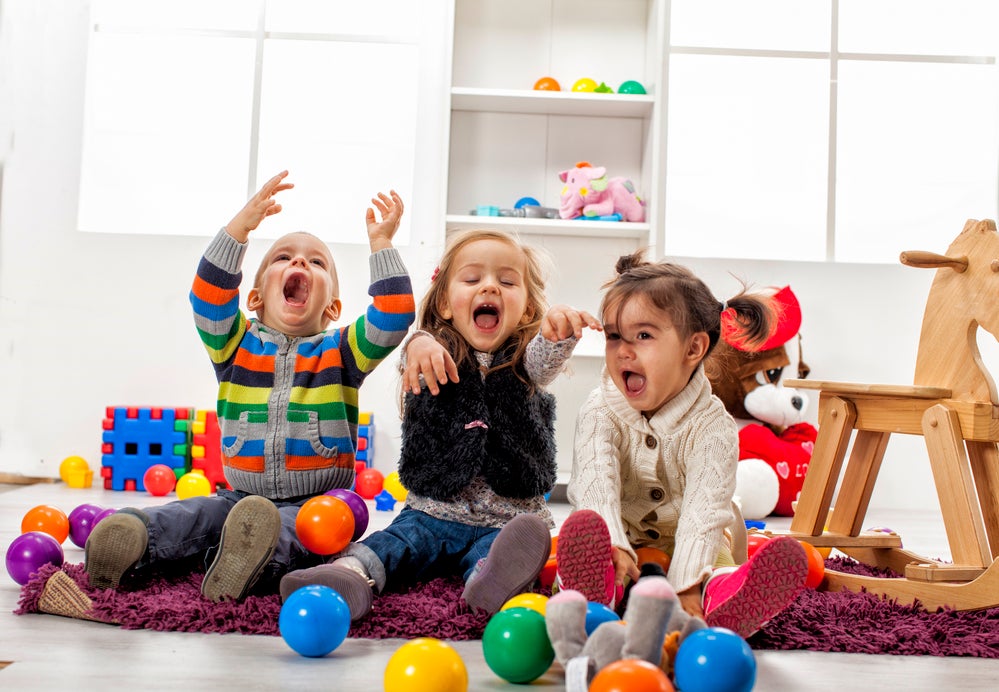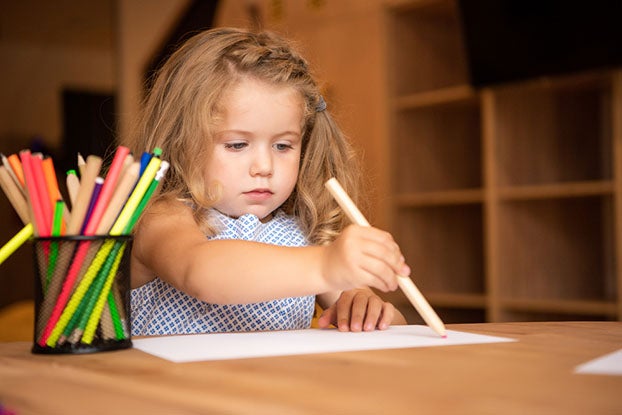Pop quiz: What’s a better way to get a 3-year-old to learn, pop quizzes or playtime?
If you guessed playtime, you’re right! Play-based learning activities for 3-year-olds help them develop the skills they need for school and life by tapping into their natural love of play. It’s a lot easier to get a toddler to play a learning game than to sit down and study—plus, they’ll actually learn more!
The Short Cut
- Learning activities for 3-year-olds can help them develop Core Skills, Creativity, Critical Thinking, and the other 5 C’s that help them thrive
- Play-based learning activities work well because kids learn more when they’re doing something they’re interested in
- Many of the best activities are simple and use everyday items from around the house
We’ve put together instructions for seven of our favorite play-based learning activities for 3-year-olds, plus some general tips, to get you started.
Why Learning Activities for 3-Year-Olds Work
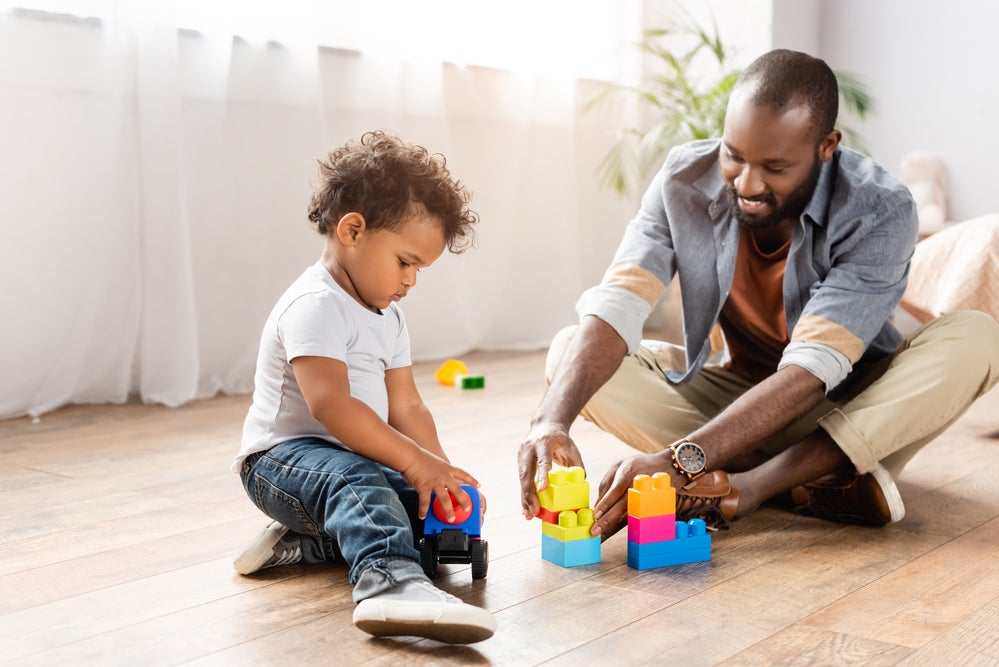
Three-year-olds have a lot of energy, and they’re often eager to have new experiences. You can take advantage of their natural Curiosity (one of the 5 C’s) to help them learn valuable skills and see where they are in reaching their developmental milestones.
When kids do an activity they’re interested in, their brains literally light up on researchers’ scans. They learn more and retain more of what they learn, including important abilities.
For instance, hands-on activities—in which your child molds, cuts, sticks, sorts, or manipulates objects—help them develop motor skills. They also help them learn to follow directions for precision and accuracy, improving their Critical Thinking. Similarly, activities like putting puzzles together and playing with building blocks help develop reasoning skills and Creativity (another of the 5 C’s).
All of these abilities will help them as they get older and start working on more complex skills like writing and tying shoelaces.
The first six years of a child’s life are a critical time for brain development. The things they learn in this period help them perform well in school, excel in work, build healthy relationships, and live happy, fulfilling lives.
How Should I Teach My 3-Year-Old?
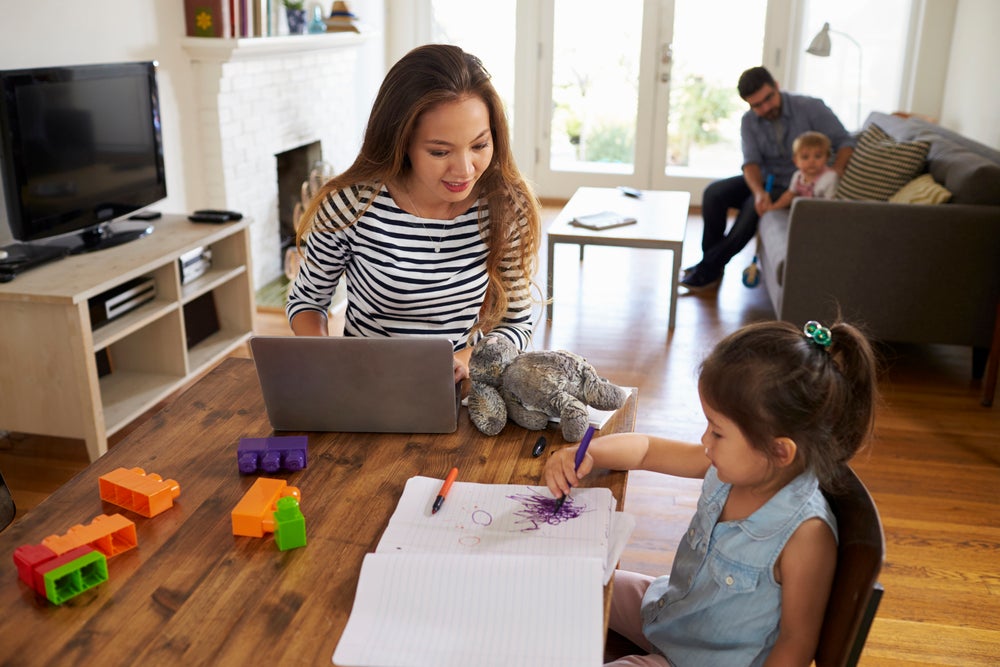
Keep It Simple
Parents sometimes think early learners need an elaborate game or flashy toy to hold their attention. But three-year-olds are fascinated by lots of simple things—different colors and shapes, how these colors change when you mix them (e.g., red and blue make purple), kicking a ball, storybooks about dinosaurs, baking cookies, and so on.
You don’t need anything complicated to create engaging learning activities for 3-year-olds. In fact, you’ll often be more successful if you keep it simple and use everyday items you already have.
Allow for Creativity
Life is full of right answers for 3-year-olds (and a lot of them, like “Can I hit someone when I’m mad?” are important!). But focusing on process over the finished product when you’re playing helps kids maintain their natural Creativity. If they decide to paint a blue dog, that’s OK! And if they choose to create a 10-legged cat, that’s great too.
Give them time to play with no “right answers” to strengthen this important skill.
Be Flexible and Patient
Not every activity you try is going to be a hit with your kids. That’s OK!
At this age, your child is learning who they are and what they’re comfortable with. Exploring their likes and dislikes (which can change quickly!) is part of their development.
7 Top Learning Activities for 3-Year-Olds
1. Number Hunt
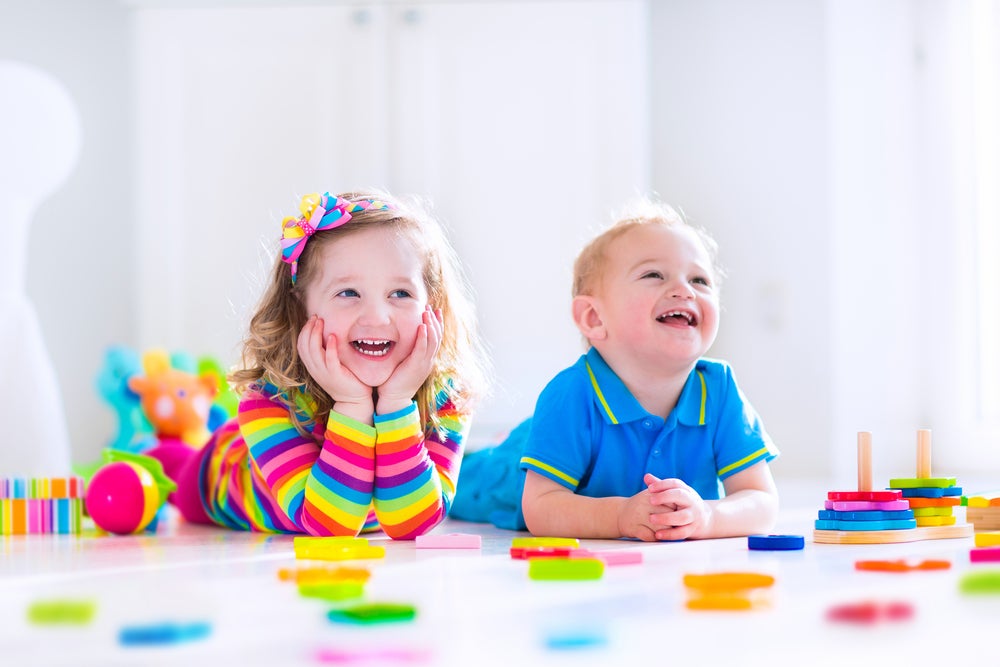
What You’ll Need
- A set of fun items—from teddy bears to building blocks to balls, anything goes!
What to Do
- Hide the items around a room
- Ask your three-year-old to find a set number of an item or a group of items (for example, ask them to find one teddy, two socks, and three balls)
Play Tips
- If this is too easy and they lose interest, try turning it into a race against the clock (can they find the items in just one minute?)
- If they find the game a little tricky, ask your child to search for one item at a time (e.g., one teddy, and then one sock, and then one ball) and progress from there
We love this activity because it helps develop working memory and numeracy, important areas of both Critical Thinking and Core Skills.
2. Pasta Necklaces
What You’ll Need
- Dry, uncooked cylindrical pasta
- Sealable plastic bags
- Food coloring
- A cotton thread or string (you can also use an old shoelace)
- Tray
- Paper towel
- Beads (optional)
What to Do
- Place the pasta into the plastic bags, then add a few drops of food coloring to each bag
- After adding the coloring, seal each bag and let your kids give it a good shake
- Line the trays with paper towels, pour the colored pasta on top, and allow it to dry
- While the pasta dries, cut the string so it’s the right length to make a necklace for your child and tie a knot on one end
- Once the pasta is dry, your child can slide the pasta (and beads if you use them) onto the string to make a necklace. When they reach the end of the string, tie the two sides together and you’re done!
This is a fun way to help your child practice counting (“How many pieces of pasta are you adding?”), develop fine motor skills, and explore Creativity.
3. Trace Yourself
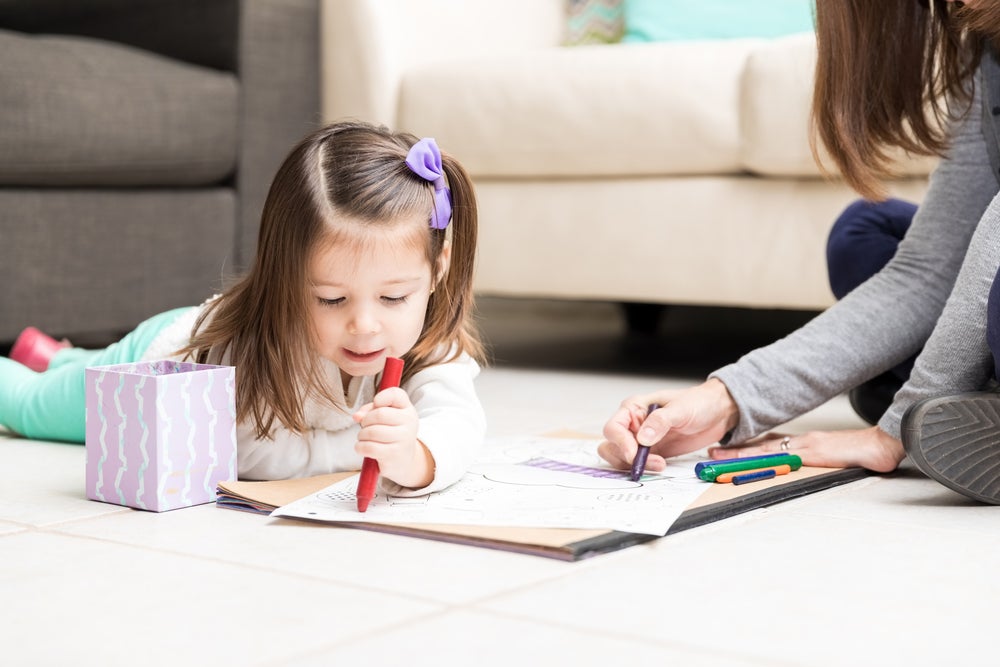
What You’ll Need
- Crayons
- Paper
What to Do
- Have your child place part of their body (like their hand) on a sheet of paper
- Show them how to trace around it using a crayon
- Let them take over tracing and finish
- Encourage them to decorate their tracing however they’d like—maybe their hand needs eyes and a mouth!
Play Tips
- The simplest body part to start with is your child’s hands. Once your child has mastered tracing out their hands, they can progress to their feet.
- For even more fun, use a very large piece of paper and trace your child’s whole body. They can then add features and clothes.
This activity requires little prep and can be great for an easy afternoon when you’re in the mood for low mess levels. And it’s an excellent way to help your child practice their fine motor skills!
4. Make an Ocean
What You’ll Need
- HOMER Sail the Sea printable coloring page
- Crayons, markers, or colored pens
What to Do
- Help your child color in the printable and discover the interesting creatures that live in our seas
- As your child colors, point out the letters and say their names, the sounds they make, and creature names that start with them (“S” makes a “sssss” sound, for “seahorse”)
- Try to get your child to make the letter sounds too
Play Tips
- Lean into process over perfection. The goal is to introduce your child to letters, sounds, names, and the links between them—if all they want to do is say “sssssss” and color, they’re still learning!
- To make things even more fun, give the creatures silly names and make up stories about them
This is a great activity for developing Core Skills like letter-sound recognition and fine motor skills!
5. Build a City
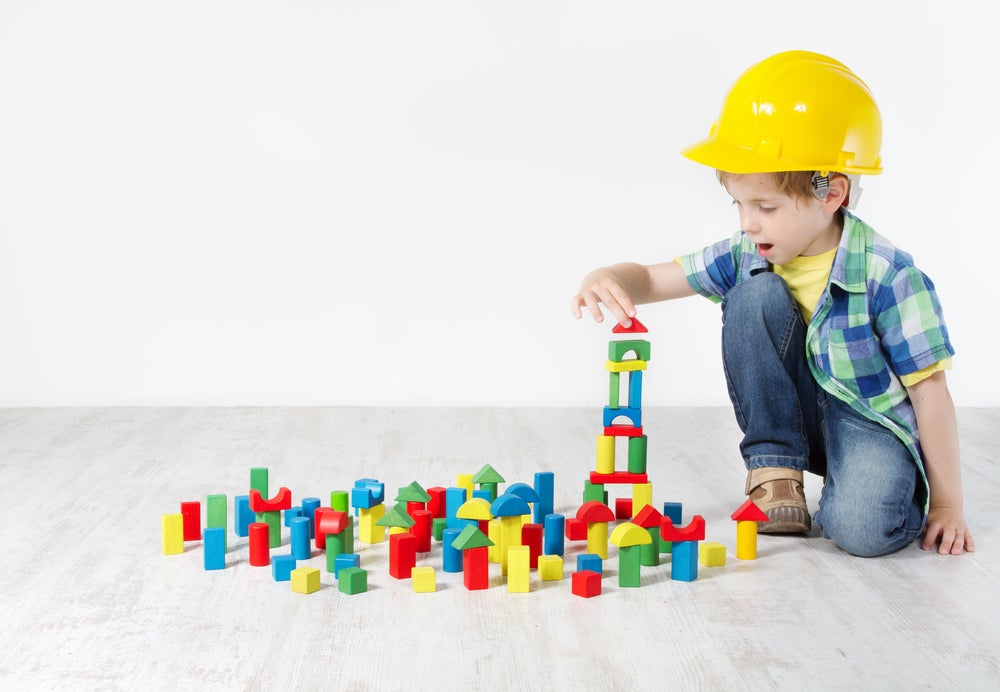
What You’ll Need
- Building blocks
What to Do
- Get out the blocks and start making things, giving each building a name (“This is a candy store. This is an apartment building. This is a playground.”)
- Invite your child to name their own creations as they build alongside you
- If they’re enjoying the game, ask them to copy buildings you’ve made (“This is a candy store. Can you make one too?”)
This quick, simple activity helps develop Critical Thinking (copying your buildings), Core Skills (fine motor skills), and Creativity, all at once!
6. Watch It Grow
What You’ll Need
- HOMER printable seed growth tracker
- Crayons or pencils
- Large jar (glass or clear plastic)
- Fast-growing seeds (e.g. peas or beans)
- Paper towels
- An old milk or juice carton
- A ruler or measuring tape
What to Do
- Ask your child to fill the jar with paper towels, then pour water onto the paper towels until they’re slightly damp
- “Plant” the seeds in the damp towels, positioning them close to the jar’s edge so you can watch them grow
- Use the printable to decorate the “watering can” (the milk or juice carton) and add a tag with the plant’s name
- Each day, make a fun moment of checking the jar and asking your child to note any changes you can track in the field notes (“Oh! We finished breakfast! Time to check the jar!”)
- If the paper towels dry out, add water
This activity introduces kids to how plants grow, stoking their Curiosity (another of the 5 C’s) as they explore the way the seed changes day by day!
7. Create Your Own Color Hunt
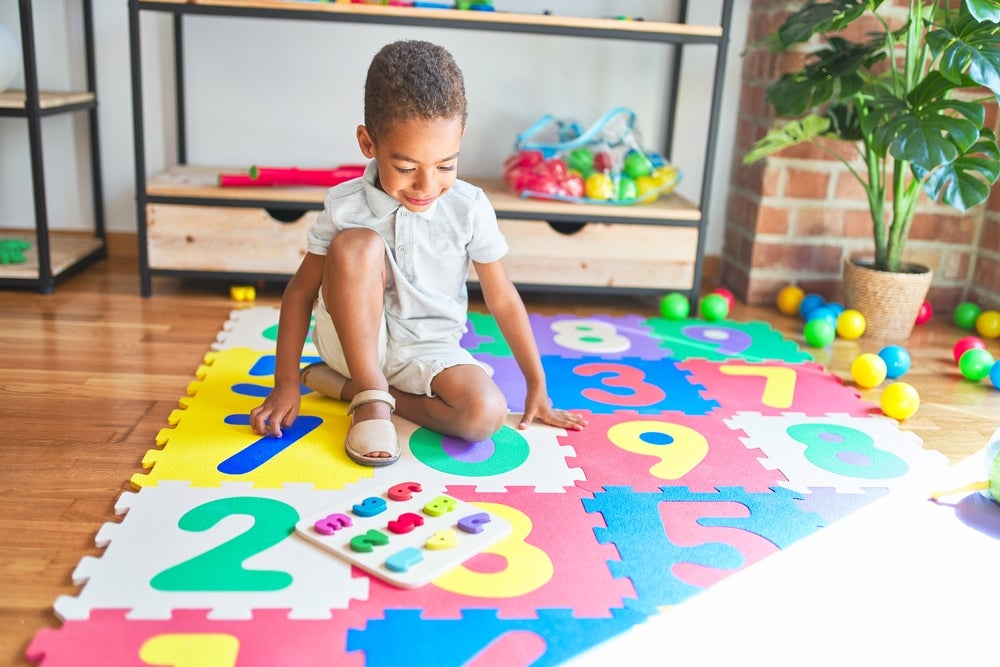
What You’ll Need
- Crayons
- Five objects that match each color of crayon, located in or around the house
- Optional: HOMER Make a Color Hunt printable
What to Do
- Draw a square in the center of a piece of paper (or use the optional Make a Color Hunt printable)
- After drawing the square, use just one color to color it in
- Hand your child the paper and ask them to find five items in or around the house that have the same color
Play Tips
- For kids who aren’t counting yet, you can place items in a bucket or box and ask them to find all the items inside that match the color on the paper
This is a great activity to help with sorting, learning colors, and counting!
Continue the Adventures with Begin!

There are lots of ways to help your child stay entertained, engaged, and learning at home! These activities should help your 3-year-old develop a wide range of important skills.
And if you need more, don’t worry—we’re here to help. Sign up for our emails or check out our award-winning products, from kid-safe learning apps to hands-on activity kits, or try our Early Learner Bundle to see how it all comes together to give your child their best start to achieving their fullest potential.
